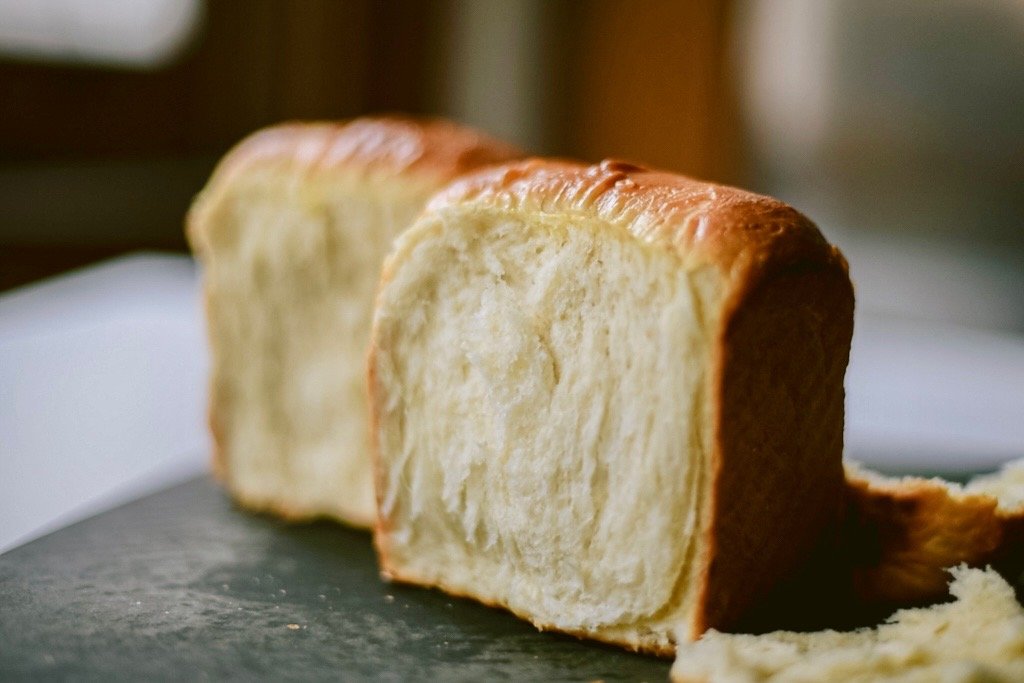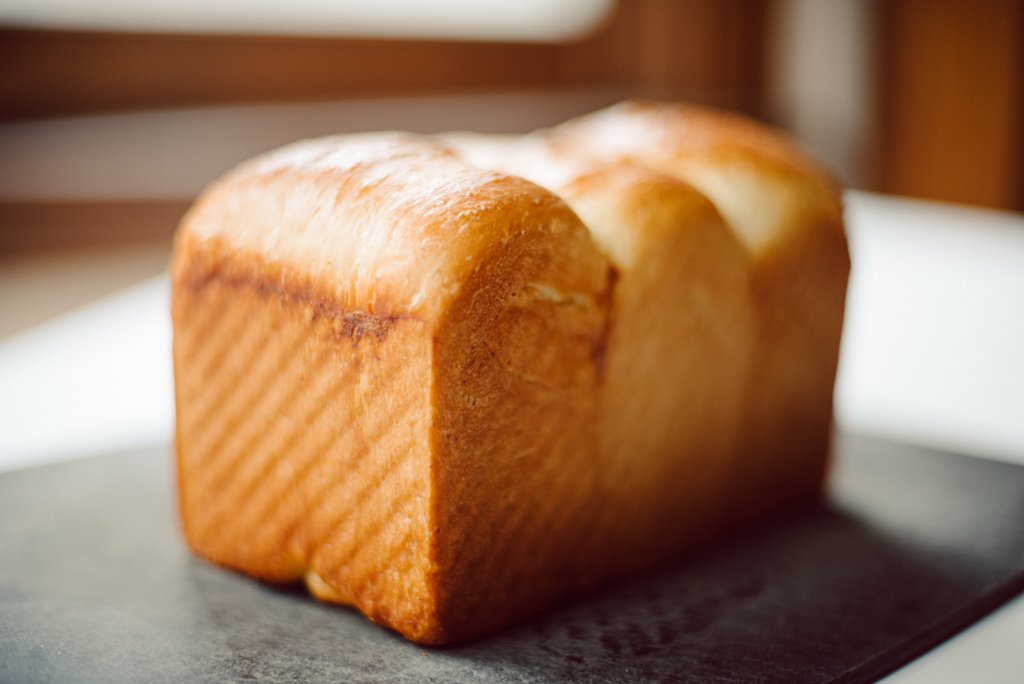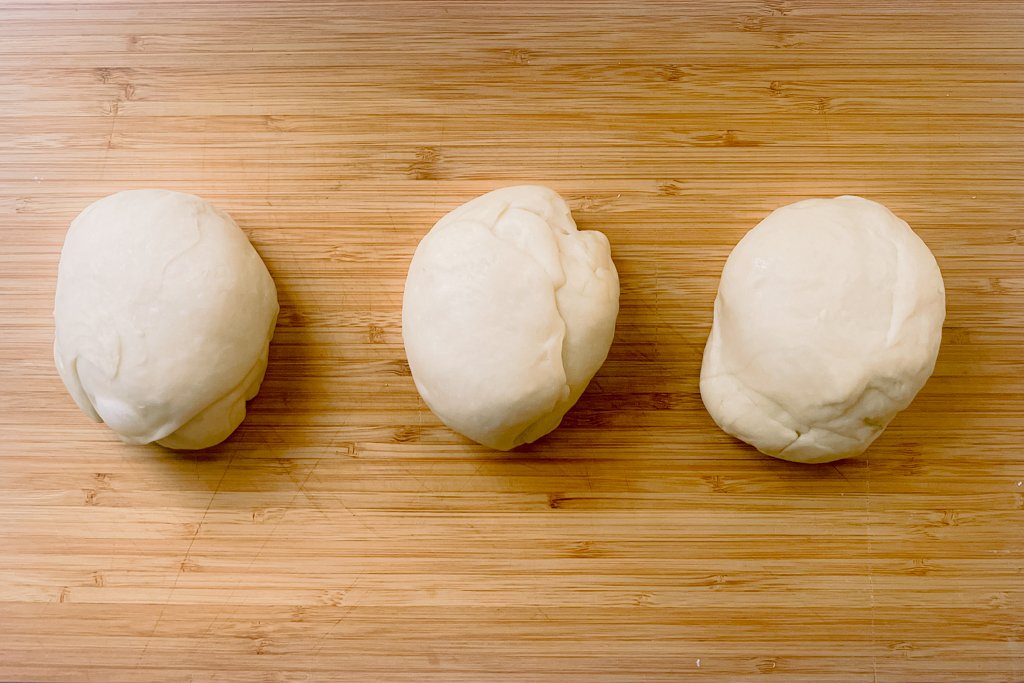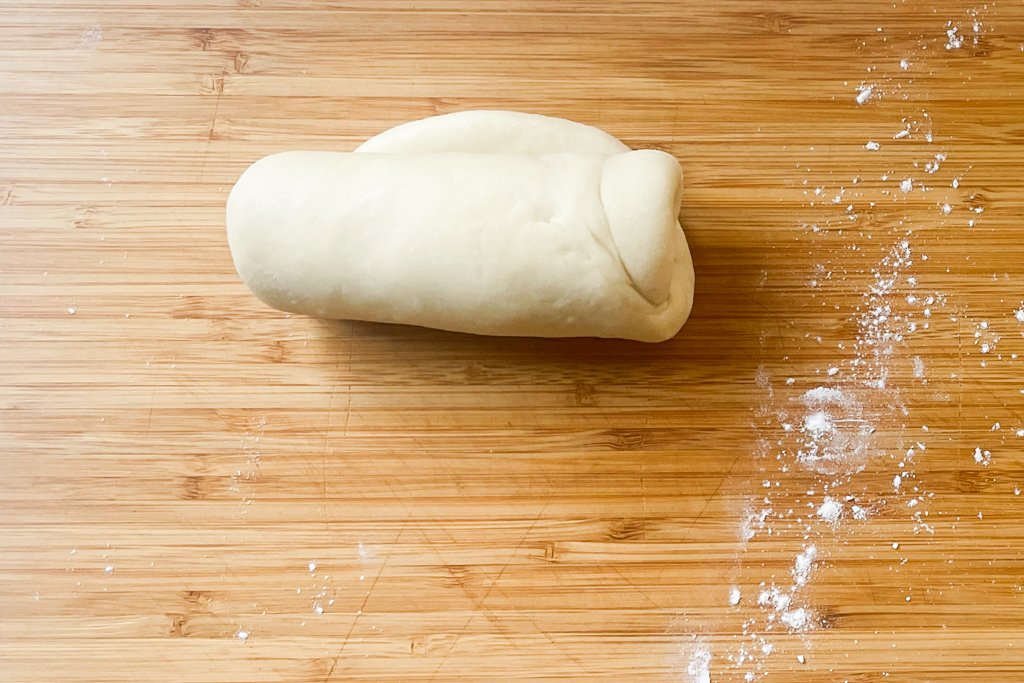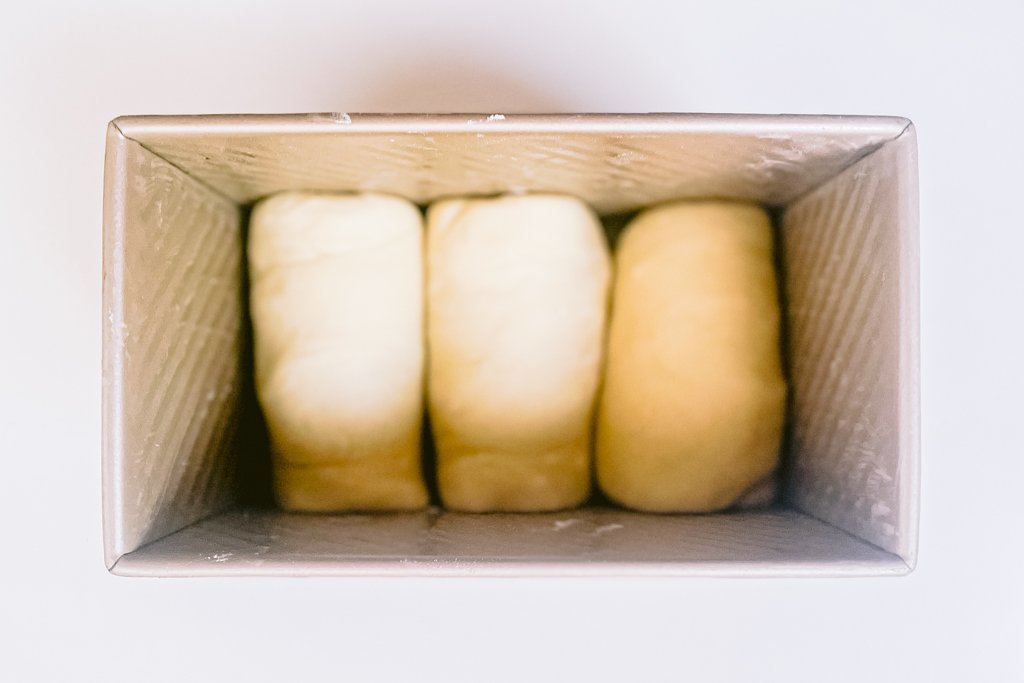Korean Bakery Milk Bread
Time:
4-5h
Difficulty:
Intermediate
Loot:
1 9x5 pan
We have Paris Baguette at home!
Seriously, as much as I loved tearing apart a loaf of this with my mom in the car back from our annual New Year’s trip to the Jackson boulevard H-mart for tteokguk supplies, there’s just no comparison to this recipe. It’s fluffy, steamy, a little buttery, and subtly sweet. If you have the self-control — which you probably don’t — it can make an epic sandwich, a heavenly french toast, or be a perfect pillow to a layer of jam or honey.
Forging this recipe definitely took a little over a week, and a whole lot of eggs and butter. It was about 3-4 flat, dense loaves before I noticed my yeast was dead (since we bought it around 4 years ago). As an aspiring bio-major, I’m a little more than embarrassed. Chicago winters are also pretty much bone dry, so rising the dough inside took about 200 years. But after tweaking the flavor, MacGyvering a proofing box (that you can do as long as you have an oven), and coughing up 8 bucks for new yeast, boom. Perfect “cloud” bread as some of my Korean students like to call it. I even baked it one more time to make sure the instructions were good.
This bread is a staple to Asian bakeries from all over. Whether you call it uyushikppang, pai bao, shokupan, or hokkaido milk buns (Joshua Weissman fans in the house), you found this recipe, so you obviously have really good taste. I’m not gonna lie to you. It definitely takes a little technique, but if you follow along with my tips and tricks, I promise you’ll nail it.
Pan Size: 9x5 loaf pan
Word to the Wise
Use bread flour. This allows a better rise, stronger dough, and thus a fluffy pillow.
Use whole milk. Trust me on this. Again, can you use 2 percent? Absolutely. But will you get the fluffy soft shreds? Probably not. Part of what gives this dough its unique texture/flavor is its higher fat content.
Test your yeast. Make sure the container is not past the expiration date (usually about 6 months after you buy it). Don’t repeat my dumb-dumb mistakes.
Poke your bread to check if it’s done kneading/proofing. If you poke your dough and it doesn’t bounce back at all, it’s overproofed. If it bounces back fully right away, underproofed. Ideally, you want it to bounce back about halfway a little slowly so that it leaves a little indentation.
Your dough should be a little wet and bouncy with a few bumps on the outside. That’s what gives the milk bread its signature fluffy texture. Don’t worry if it looks slightly shaggy or sticky a little bit more. That’s intentional.
DIY Proofing: In the wintertime (like I baked) or in other climates, proofing can be difficult in the kitchen. My tip is a DIY proofing box in the oven.
Use a heat proof baking dish, fill it with water and place it on the rack below your center rack. This creates some steam/humidity.
Preheat the oven to its minimum temp (usually around 170 degrees Fahrenheit in the U.S).
Once it beeps, kill the heat, and crack open the door for 1-2 minutes. Get out an oven/meat thermometer and place it near the center of the oven
Wait for the temperature to hit around 80-85 degrees Fahrenheit. This is the sweet spot for proofing. After this, immediately shut the oven door to prevent any further loss of moisture/heat.
Tips for Shaping
Cut your dough into three balls of equal weight (using a scale) after the first proof. Let them rest for 10 minutes.
Flour the board and a rolling pin very lightly with bread flour. Roll out each ball until it’s flat and in a rectangle-ish shape. Make sure they are of equal length.
Roll your sheet out from the short side all the way up to the top.
It should look like this.
Tightly pinch it shut and place it with the seam facing down.
Once you finish the rolling, place all of your dough rolls into the pan like this.
Ingredients
Tangzhong
¼ cup bread flour
¾ cup water
1 ½ tsp honey
Dough
2 ¾ cups bread flour
4 ½ tsp nonfat dry milk powder
½ tsp salt
¼ cup graulated white sugar
1 ½ tsp active dry yeast
1 egg white
1 egg
⅔ cup whole milk, lukewarm
3 Tbsp unsalted butter, softened (⅜ stick)
Instructions
Tangzhong:
In a small saucepan, whisk together ¼ cup bread flour and ¾ cup water. Add 1 tsp of honey.
Cook over medium-low heat for 3-5 minutes, stirring constantly, until it thickens into a paste.
Transfer to a small bowl and let cool to room temperature. If you want to make this the next day or store it for later, put some plastic wrap over your bowl/pot and stick it in the fridge.
Dough:
Fill a small heat-proof pan or bowl with water. Place this on the lower rack in your oven. Preheat the oven to its lowest setting (usually around 170 degrees Fahrenheit in the US). If it can go as low as 80-85 degrees with a proof setting, do this.
Warm ⅔ cup milk slightly in a small pot or microwave (not hot, just lukewarm). Whisk in the egg white.
In a large mixing bowl, 1 ½ teaspoons yeast, combine 2 ¾ cups bread flour, ½ teaspoon salt, ¼ cup sugar, and 4 ½ teaspoons nonfat dry milk powder.
Add the milk mixture and tangzhong. Mix until well-combined on low speed (2) using the dough hook attachment on your stand mixer for 2 minutes. After this, the dough will look a little shaggy and dry. That’s alright. Add ½ teaspoon of whole milk here.
Knead for around 4-5 minutes on medium speed (4). The dough should stretch to form a thin "windowpane" without tearing.
Gradually knead in 3 tablespoons of softened butter until fully incorporated. The dough should pull away from the sides of the mixing bowl and pass the windowpane test. Place the dough in a bowl, cover with plastic wrap, and pop it in your oven with the heat off. Let it rise for 1-2 hours, or until doubled in size.
Shaping and Baking
Punch down the dough and divide it into 3 equal portions. Use a kitchen scale to ensure the weight is equally distributed.
Let the dough rest for about 10 minutes. In the meantime, refill your heatproof dish from the oven with water, and preheat again to 170 degrees Fahrenheit or minimum temperature.
Melt a little butter in the microwave, and using a brush, thoroughly grease the sides and floor of the pan.
When the dough is done resting, kill the heat in the oven. Roll each portion of dough into a long rectangle, roll from the short side up into a log and pinch it at the end (check out Tips for Shaping).
Place the logs side by side in a buttered bread loaf tin with the seam facing down. Let rise for 30-45 minutes until the dough nearly fills the tin.
Combine one egg (or leftover egg yolk) with a splash of whole milk. Whisk together and brush across the top of your buns. If you want a square loaf, place the top on now. If you want rounded tops, leave it off.
Bake at 340 degrees Fahrenheit for 40-42 minutes, or until cooked through and golden on top. Let it cool for about 5 minutes so it pulls away from the side. Flip it over onto a tray or wire rack and enjoy!
